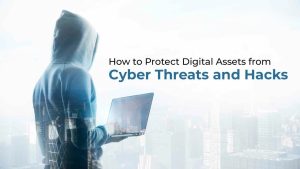Introduction In today’s world, nearly every activity from banking to socializing happens online. That makes our photos, documents, and financial records prime targets for cybercriminals. Implementing the right cybersecurity measures is key to protect your digital assets from theft, ransomware, and data breaches. This article dives into the 5 top cybersecurity measures you need for
Introduction
In today’s world, nearly every activity from banking to socializing happens online. That makes our photos, documents, and financial records prime targets for cybercriminals. Implementing the right cybersecurity measures is key to protect your digital assets from theft, ransomware, and data breaches.
This article dives into the 5 top cybersecurity measures you need for 2025. From social media strong password management to disaster recovery, we’ll cover each strategy in detail. You’ll learn not only what each measure is but also how to apply it effectively. By the end, you’ll have a solid action plan to keep your digital world safe and secure.
What Is a Digital Assets?

Image by: Yandex.com
Digital assets include anything valuable stored on your devices or in the cloud. They range from photos, videos, and personal files to customer data, financial records, and intellectual property. Unlike physical assets, digital items can be copied, transmitted, and stolen in seconds if left unprotected.
Understanding your digital asset landscape is the first step to safeguarding it. Conduct a quick inventory of your files and services. Note where each asset lives your laptop, smartphone, mobile device, or an online service. This helps you apply the right digital asset security measures in each area.
Why Cybersecurity Matters for Digital Assets

Image by: Yandex.com
Data security breaches and ransomware attacks have risen sharply. When hackers gain access, they can lock you out of your files or sell your information on the dark web. Recovering from an attack can cost thousands of dollars in downtime, reputation loss, and legal fees.
In united states By adopting top cybersecurity measures, you not only reduce the risk of cyber threats but also build trust with clients and partners. Whether you handle personal photos or sensitive business data, these measures form a protective shield around your digital world. They help you sleep better knowing your assets are safe.
Top 5 Cybersecurity Measures to Protect Digital Assets

Image by: Yandex.com
1. Implement Strong Password Management
One of the simplest yet most effective cybersecurity best practices is strong password management. Weak or reused passwords are the top entry point for hackers. To secure your accounts:
- Choose long, unique passwords for every login. Aim for at least 12 characters using letters, numbers, and symbols. Avoid names or common words.
- Use a reputable password manager to generate and store your passwords securely. Tools like 1Password or LastPass encrypt your vault with a master password that only you know.
- Enable auto‑fill features to reduce typing errors and phishing risks. Never write passwords on sticky notes or share them over email.
Tip: Change high‑risk passwords—like banking or email—every three to six months. This limits damage if one account is compromised.
2. Use Multi‑Factor Authentication (MFA)
Multi‑factor authentication adds a second layer of defense beyond your password. Even if a hacker steals your login, they still need a one‑time code or device to gain entry. MFA methods include:
- A text message or app‑generated code
- A hardware security key (like YubiKey)
- Biometric scans, such as fingerprint or facial recognition
Enable MFA on all critical services: email, cloud storage, and financial accounts. Many apps support “push” notifications, where you simply tap “Approve” on your phone. This is both secure and easy to use.
Tip: For the highest security, pair a hardware key with app‑based codes. This shields you from SIM‑swap attacks and phishing scams.
3. Keep Software and Systems Updated
Hackers often exploit known software flaws to break into systems. By regularly applying system updates, you close those gaps. This applies to:
- Operating systems on computers and smartphones
- Web browsers and browser extensions
- Office applications and business software
- Home routers and IoT devices
Enable automatic updates whenever possible. For business networks, schedule regular maintenance windows to push patches across all devices at once. If you delay updates, you leave your network exposed to rapid exploits.
Tip: Use a patch management tool for larger networks. It scans for missing updates and deploys them centrally, saving time and reducing risk.
4. Employ Network Security Measures
Your home or office network is the gateway to your digital assets. Solid network security keeps intruders out and data flowing safely. Key measures include:
- Set a strong, unique password on your Wi‑Fi router and enable WPA3 encryption.
- Segment your network to separate work devices from guest or IoT gadgets.
- Deploy a firewall—either on your router or as software on each device—to filter incoming traffic.
- Use a virtual private network (VPN) when on public Wi‑Fi to encrypt your data end‑to‑end.
For businesses, consider a unified threat management (UTM) device that bundles firewall, intrusion detection, and malware protection. Regularly review your network logs to spot unusual activity early.
Tip: Change your router’s default admin password immediately after setup. Defaults are widely known and can be easily exploited.
5. Regular Backups and Disaster Recovery Plans
Even with all defenses in place, breaches or hardware failures can still happen. A disaster recovery plan and routine backups ensure you can bounce back quickly. Follow the 3‑2‑1 rule:
- Keep three copies of your data: the original plus two backups.
- Store backups on two different media (e.g., external drive and cloud).
- Keep one backup off‑site to protect against theft, fire, or flood.
Test your backups every few months by restoring random files. Also, outline clear steps in your recovery plan: who to call, which systems to restore first, and how to communicate with stakeholders. A well‑practiced plan saves precious time during a crisis.
Tip: Automate daily backups with cloud sync tools. This reduces human error and keeps your data current.
Common Pitfalls to Avoid

Image by: Yandex.com
Many people make simple mistakes that undermine their cybersecurity measures:
- Relying on default passwords or skipping MFA setup.
- Delaying or ignoring software updates.
- Mixing personal and work data on the same network.
- Storing all backups in one location.
- Clicking on email links without verifying the sender.
Awareness and discipline are your first line of defense. Regularly review your security settings and educate everyone in your home or team about safe online habits.
The Future of Cybersecurity

Image by: Yandex.com
Looking ahead, security tools will grow smarter and simpler to use. Artificial‑intelligence systems will scan networks in real time, spotting unusual activity before damage spreads. Password‑free logins, such as fingerprints or face scans, or online accounts username and password will replace complex codes, making safety easier. Cloud services will offer built‑in, always‑on protection, moving heavy tasks off personal devices to save confidential information. Governments may set stricter data rules, pushing companies to raise standards further. As threats keep changing, staying safe will involve a mix of smarter technology, clear habits, and regular learning—ensuring digital assets remain protected in an increasingly connected world.
Comparative Table: 2025 Cybersecurity Measures
| Measure | Purpose | Key Benefit |
|---|---|---|
| Strong Password Management | Unique, complex credentials | Blocks easy password guessing |
| Multi‑Factor Authentication (MFA) | Adds second login factor | Prevents unauthorized access |
| Software & System Updates | Patches known vulnerabilities | Reduces exploitable security holes |
| Network Security | Secures home/office networks | Stops intruders and secures data flow |
| Backups & Disaster Recovery | Data redundancy and recovery planning | Ensures fast restoration after incidents |
Conclusion
Safeguarding your digital world requires more than just antivirus software. By adopting five core cybersecurity measures—strong passwords, MFA, regular updates, network security, and reliable backups—you create multiple layers of defense. These steps reduce the risk of data breaches, financial loss, and downtime. As threats evolve in 2025, your security must stay one step ahead. Stay proactive: review your setup, test your defenses, and educate everyone around you. With the right practices, you can enjoy peace of mind knowing your digital assets are well protected.
Call to Action
Ready to strengthen your cybersecurity? Visit our website for detailed guides, tool recommendations, and expert advice on protecting your digital assets today!
















